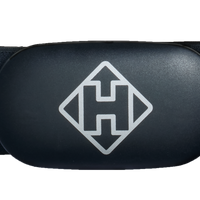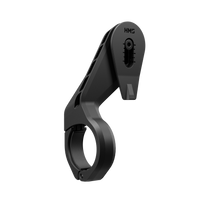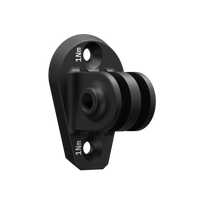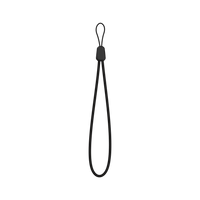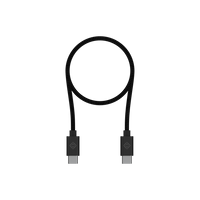Eight reasons why you shouldn’t rely on your smartphone as your cycling head unit.
We have lived in a world that has been largely governed by the smartphone paradigm for exactly a decade now. Smartphones have become the Swiss army knife of technology. They have done more and more, and have replaced many things, including PDAs, cameras, car GPS systems, alarm clocks, and much, much more. The main reason that this is the case is not because it makes sense to have a single device do everything in one’s life, but rather because it is often too expensive and too difficult for companies to make purpose-built products with mass appeal.

The guaranteed result of suspending your smartphone on your handlebars.
Customers want the best possible product, and this is almost always not a Swiss army knife, but rather something specialized.
A smartphone is a marvel of technology, but it is not the end state of technology. Increasingly, it’s becoming evident that purpose-built products serve specific needs than a “catch all” device like a smartphone. We see the Kindle from Amazon as one of the earlier purpose-built devices that provides the best possible experience for a specific use case: reading. While one could read on a smartphone or tablet, the Kindle presents a better reading experience and has therefore been a huge commercial success.
Despite the leaps and bounds cycling technology has made in the last decade, cyclists still prefer to have unique pieces of equipment for unique riding circumstances- whether it’s a dedicated set of climbing wheels, a dedicated aero helmet, dedicated mountain bike, or in our case- a dedicated head unit.
We know that by building Karoo, we will provide the best possible cycling computer — and as cyclists, we know you will understand why this matters.
1. Intended for harsh conditions, not pockets.
Cyclists are brutal towards their equipment, pushing it and themselves to extremes; the head unit, much like any other piece of cycling kit, is not spared this fate. Our hardware team spent months pulling apart an enormous variety of new and used devices — some marketed as “rugged,” and some not — to learn about how it’s been done before, and how we can do it better.
The resulting body of data we gathered informed a device that was specifically engineered for the unique environment that is your bike’s handlebars.
Karoo’s body itself is built on a remarkably strong and completely proprietary aluminum/titanium skeleton, which serves as the anchor for the unit’s intricate electronic architecture. Connections between all that circuitry were optimized specifically for impact and vibration resistance, tested using special platforms we developed in-house for the most extreme stress tests. The outer shell, screen, and mount (more on those latter two in a minute) were also proven to grueling standards of toughness. Even Karoo’s buttons were tested to outrageous mechanical limitations.

Ensuring that Karoo was waterproof was also a key priority in its realization, and so it was spec’d to the international IP67 standard, meaning it can survive submersion below a meter of water for up to 30 minutes — something we wouldn’t recommend trying with most smartphones.
2. Battery Optimization
While the battery life of many smartphones these days can be remarkable, that life is usually accompanied by an asterisk (or sometimes, many). That asterisk often denotes a device that is in an extremely “passive” mode, transmitting and receiving as little data as possible.

5+ hours of riding later might see you feeling drained but Karoo will be as capable then as it was at the start.
This is simply not an option for a device like Karoo, with the constant and changing demands of its user. As anyone who’s tried knows, using an app on your smartphone for the simultaneous demands of tracking, navigating, displaying, and calculating all sorts of metrics kills a full battery very quickly. This drain rate is elevated in temperature extremes as well. Through a combination of hardware optimization and software intelligence, Karoo’s 3000mAh lithium-polymer battery pack can run up to 15 hours, depending on ride configurations. Karoo can be charged on the go, as well, and can be fully recharged in three hours or less.
3. Usable Buttons
The trend of button disappearance from smartphones is one we understand from both aesthetic and economic standpoints, but for Karoo, neither of these takes precedence over function.
Karoo’s power button (left) and two general function buttons, at the top-left corner of the unit. The other two function buttons are at the bottom-right corner.
Karoo’s four buttons serve two purposes. The first is use of the device’s native functions. Whether navigating, creating a user profile, or toggling various other actions, the buttons do not replace, but simply augment, the touchscreen. Karoo’s display was engineered to be especially responsive, even in horrendous conditions, but we understand that some riders will simply prefer the satisfying action of the unit’s buttons — especially while wearing gloves — which are also staggered to avoid accidental pushes.

The presence of external buttons also allows our software engineers to implement exciting features down the road to expand on Karoo’s usability. We’ve already added a “screen lock” feature to allow users in turgid conditions or donning heavy winter gloves to still easily operate Karoo even when conditions go south. Besides usability upgrades, we’re exploring other ideas for button use- whether its trimming electronic drive trains or adding social features for in-ride group management, we’ve just begun to scratch the surface for what can be done.
4. Dedicated Mount

Securely attached to the bike, ready for any rugged roads that come your way.
Simply put, no phone case is going to mount to your bike as solidly as a dedicated computer. To safely secure your smartphone on your handlebars, you’ll need at least one additional piece of hardware, in the form of a dedicated mount. No mounts we’ve encountered, however, offer the rugged protection already built into Karoo, requiring even more investment into a costly phone case that, if it fails, could result in a totally lost smartphone.
5. Superior Screen
No single component of Karoo’s hardware has received quite as much attention as its screen. We recognized first and foremost the need for strength. Corning Gorilla Glass 4 was selected for its unprecedented durability and scratch-resistance, putting it on-par with the toughest devices consumers can get their hands on.

Karoo’s screen has unmatched clarity, responsiveness, and ease of use.
Next, we wanted to address a key problem that all smartphones (and some competitors) have with their screens: reflectivity. Karoo’s transflective display was specially designed to mitigate glare, maintaining maximum legibility, even in direct overhead sunlight, when most other device screens simply wash out or bounce light up into your eyes.

Even in direct sunlight, the transflective screen shrugs off glare, ensuring optimal visibility in bright or dim conditions.
6. Ditching the Advertising Model
We believe that a large degree of the misalignment between consumers and much of the tech industry can be traced to the advertising model that is behind most of today’s tech companies and their products. We built Hammerhead, and thus, Karoo, on a simple and honest business model: create the best possible product, at a fair price, confident that most customers will prefer to pay for this in itself, rather than relying on free or discounted mobile apps, mining your phone for data to sell to third-party bidders and exposing you to relentless advertisements.
7. Complete Connectivity
While virtually anyone reading these words is familiar with the data transmission platform Bluetooth, fewer are familiar with ANT+, a similar technology used in a wide variety of wireless fitness devices — broadly categorized as “sensors” — including heart rate monitors, power meters, speed sensors, and much more. Many smartphones are not ANT+ compatible, putting them at odds with the needs of many cyclists, no matter how sophisticated the app they choose. Compatibility with virtually any sensor on the market was an attribute we deemed central to Karoo’s success.
8. Cycling-Specific Software
Hammerhead envisioned Karoo as the central hub for all of the software needs of the cyclist today, from navigating to data gathering and transmission. On both the front end (the user interface) and the back end (the coding behind the interface), Karoo has been optimized in countless ways that better serve cyclists than apps running from a smartphone alone can. Rather than juggle a myriad of apps on your phone, Karoo centralizes all ride functions into a single location.
We chose an Android platform for the device, because it enables the development and precise customization of apps for Karoo’s various functions. While a great starting point, we still had to essentially re-engineer Android for Karoo’s purposes, removing a lot of the stock Android phone functionality, like the Google search bar. While effectively creating our own version of Android is challenging and requires a considerable amount of work, we believe, again, that a purpose-built operating system is better than a lightly rebranded smartphone interface.
An example of this customization is seen in Karoo’s relatively large and fully customizable screen, which allows the user to prioritize which metrics are displayed most prominently. Different rider profiles can be created for different riding scenarios, as well. No app we’re aware of currently offers this flexibility, and certainly not in conjunction with specialized hardware.

An example of 1–5+ data set display optimizations, on the “white” display mode (note: the use of “DATA SET #” on the readouts are just placeholder titles). Each type can be individually customized by the rider.
Another example of hardware/software co-optimization is that of our antenna. It is rendered with excellent hardware and construction, as well as software that is designed to get the most out of that hardware, and as efficiently as possible, across 3G, Bluetooth, ANT+, and WiFi connectivity. See this article we previously wrote on how well this relationship works in Karoo, as well as the many ways it can be disastrous to a device’s function if not developed properly.
Karoo’s focus on its in-ride optimization means that, unlike an application you may run on a smartphone, there aren’t other apps or processes competing for Karoo’s data bandwidth or battery power. Karoo’s mission to serve the cyclist is not burdened by social media alerts, email notifications, news gathering, dating apps, game reminders, or the many other processes your smartphone is running right now, even if you don’t know it, and even if you haven’t used those apps in months.
If you’re curious to learn more, visit www.hammerhead.io


